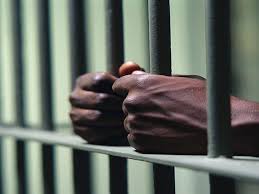UGA Researcher Plays Key Role in Landmark International Study Aimed at Preventing Schizophrenia

A groundbreaking international research effort is underway to advance early identification and prevention of psychosis—and Gregory Strauss, Ph.D., an OIBR Distinguished Scholar, and Franklin Professor of Psychology at the University of Georgia, is playing a critical role. With more than $50 million in funding from the National Institute of Mental Health (NIMH), Strauss and his team are part of the Psychosis Risk Outcomes Network (ProNet). This global initiative aims to identify early markers of psychotic disorders like schizophrenia and stop them before they take hold.
ProNet is part of a larger research program known as the Accelerating Medicines Partnership Schizophrenia (AMP SCZ), a collaboration between the NIMH and international partners. The effort includes 42 research sites across the globe and more than 2,000 participants identified as being at clinical high risk (CHR) for psychosis. These individuals are followed longitudinally for two years, contributing invaluable insights into what factors may signal the onset of schizophrenia.
“This is the most comprehensive dataset we’ve ever had in the field of psychosis risk,” said Strauss. “It’s a once-in-a-generation opportunity to change how we detect and prevent one of the most devastating mental illnesses.”
Understanding Risk Before Illness Strikes
Psychotic disorders often begin with a “prodromal” period—an early phase when people experience subtle but distressing symptoms such as suspiciousness, hearing faint voices, or social withdrawal. These CHR symptoms can emerge two to four years before full psychosis sets in.
“In the prodromal stage, people may experience subtle symptoms, like hearing their name whispered or seeing shadow figures out of the corner of their eye. The symptoms are bothersome, but they’re still able to tell that the experiences aren’t real. That’s what separates it from a full psychotic episode,” Strauss explains. “It’s a crucial window for prevention.”
Participation, by itself, can offer positive effects. Research shows that individuals who complete longitudinal assessments—like those conducted in Strauss’s lab at UGA—often benefit clinically. Discussing their symptoms in detail with trained professionals, being monitored over time, and receiving treatment referrals when needed all contribute to better outcomes. “The act of being heard and supported can reduce the likelihood of a full psychotic episode,” he said.
A Massive Undertaking with Local Impact
The ProNet project is no small feat. Recruiting participants at clinical high risk is one of the most challenging tasks in clinical research, Strauss notes. That’s why a multi-site effort is essential: no single location can realistically enroll more than 15–30 participants per year.
The resulting dataset will help develop new clinical tools, including psychosis risk calculators—algorithms that integrate a participant’s clinical, cognitive, and biological data to assess their likelihood of transitioning to schizophrenia. These tools are being designed with future clinical use in mind and may eventually be available through a secure web interface for practitioners worldwide.
UGA’s Role and Collaborators
Strauss, who leads the Cognitive and Affective Neuroscience (CAN) Lab at UGA, is supported by a dedicated research team. Two ProNet coordinator cohorts have worked alongside him since the project’s launch—first Delaney Collins and Sierra Jarvis, then Lauren Jennings, Zach Carter, and Zhixin Zhang. “They’ve made everything possible,” Strauss said. “I couldn’t be more proud of the work they’ve done.”
UGA colleague Larry Sweet, Gary R. Sperduto Professor of Psychology and OIBR Distinguished Scholar, also plays an integral role in ProNet as a co-investigator, overseeing MRI data acquisition for the study at UGA.
Next Steps: A New Model for Understanding Negative Symptoms
Building on the momentum of ProNet, Strauss is now turning his focus to what he describes as the “most disabling” aspect of schizophrenia: negative symptoms. These include reduced motivation, emotional expression, speech, and social engagement—symptoms for which no approved treatments currently exist.
To address this gap, Strauss has proposed a new bioecosystem model that explores how biological, cognitive, and environmental factors interact to produce and sustain these symptoms. A new large-scale, multi-site study is in the works to test this theory, with funding proposals currently underway.
“Our goal is to develop treatments that target the most relevant mechanisms of negative symptoms in the daily life contexts where they occur,” he said. “Success means creating strategies that make a real difference in people’s lives—helping them thrive in relationships, work, and daily living.”
The Bigger Picture
Through his work on ProNet and beyond, Strauss has collaborated with some of the top psychosis researchers in the world, including Drs. Vijay Mittal, Lauren Ellman, and Jason Schiffman. “These collaborations have not only made me a better scientist, they’ve led to deep friendships,” Strauss shared.
The feedback from participants and their families has been equally impactful. Many express gratitude for the opportunity to contribute to meaningful science while receiving detailed assessments, clinical insights, and ongoing support—at no cost. These experiences help reduce stigma and empower families with knowledge and resources.
As Strauss continues this vital research, his work brings hope to thousands of families grappling with the realities of psychosis and schizophrenia.
“Living with a diagnosis of schizophrenia can be very difficult for individuals and their families,” Strauss said. “If I can help prevent even a few of those diagnoses from happening, then everything we’re doing is worth it.”
Written by: Andrea Horsman
August 12, 2025






